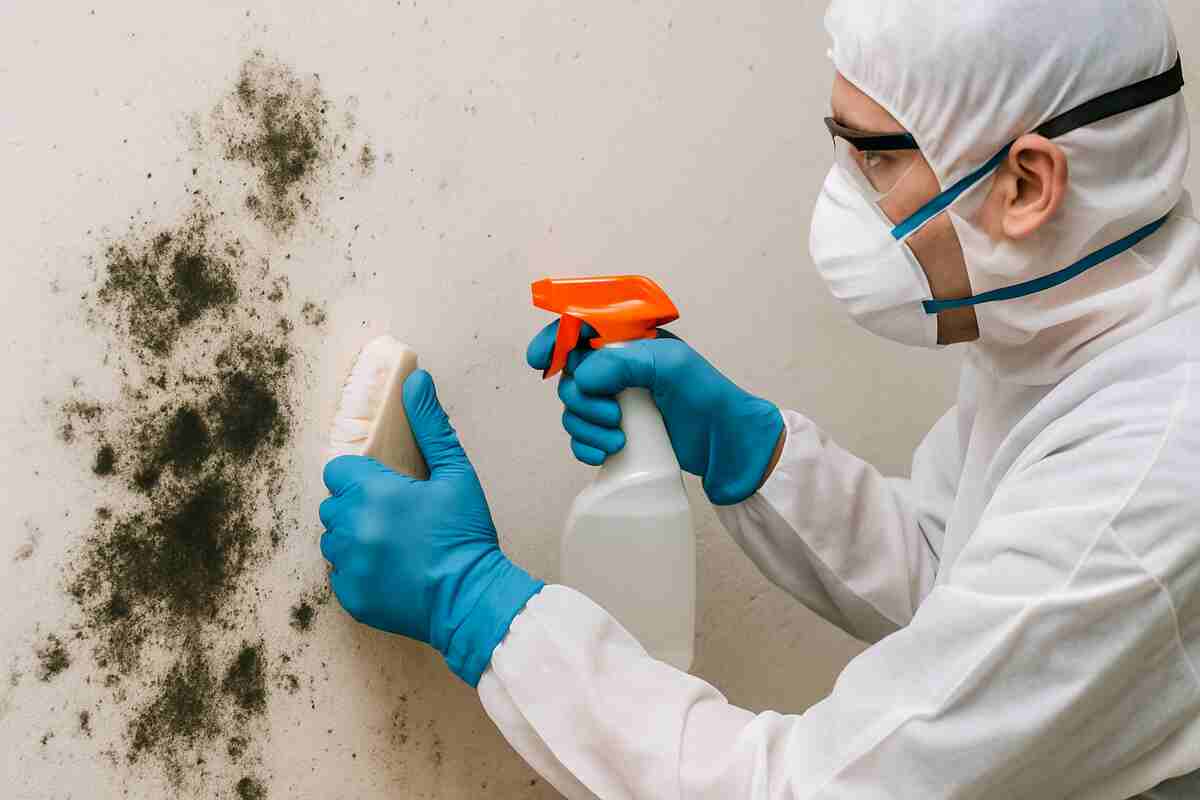How to Clean Mould and Mildew from Walls Naturally
Do you see some weird black spots crawling on your walls? And musing, is it merely barnyard muck–or is this mould or mildew? When your walls are damp or replicate a musty odour or you find them discoloured, you should take some action. Mould and mildew are not only ugly on your walls; they may compromise your health, creating allergies and can lead to structural damage in case of a prolonged issue. However, a piece of positive news? You do not require costly products and the assistance of professionals to get started.
You will find these easy and powerful ways to clean up mould and mildew on the walls using daily household items with which you might very well have at home. It can be in your bathroom, kitchen or a secret corner in your bedroom. With our assistance, you can certainly take a crack at it. These are secure, simple and ideal to execute when undertaking routine cleaning of the domicile or even a deep bond clean. The walls need to be made new once more!
What Distinguishes Mildew from Mould?
Although both mould and mildew are fungi, their appearances and effects differ. Mildew normally comes out in the form of white, grey or yellow spots, and it normally does not cause permanent damage to a surface on which it exercises growth. Mould, however, is black or green and can result in loss of life as well as rot and structural damage when not treated early enough. It is also more probable to permanently discolour surfaces, particularly when not treated. This is the reason you should not waste time and treat the black or green spots which appeared on your walls. bond cleaners in brisbane usually encounter these problems and emphasise the necessity to remove them as soon as possible, not to spend a fortune on restoration work.
Efficient Tips and Tricks of Mould/Mildew Removal and Decontamination of Surfaces
The eradication of mildew is a challenge to mould, but removal is possible of both, given the right materials, applications and methods, even in the case of mould infestation on many square feet. The things that you are going to need to disengage with the stains and notches will be: water, bleach, white vinegar, a stiff-bristle brush, spray bottles, dishwashing liquid, microfiber towels, and protective items. When the supplies are prepared, use any of the following methods to clear mould or mildew spots on the walls of your house. When you are cleaning the spots, do not forget to wear your gloves, goggles, mask and protective overalls.
The flood and dry cleanliness technique
Bleach is a powerful fluid that can kill fungus and is an ideal solution to eliminate mould and mildew. Add one part bleach and three parts water, and shake together in a spray bottle. Remember to air out a room before spraying the solution in the room in question, as this could lead to eye and nose irritation, too. Place the solution in a fungus so that the solution can be saturated for at least 10- 15 minutes, and scrub to clean the stains using a brush. This is done by many end-of-lease cleaners so as to clean up walls where there is growth of mould/mildew. Water spray on the marks and repeat the procedures in case they refuse to be removed on the initial attempt with the bleach-water solution.
White Vinegar Removal Method
Distilled white vinegar is the best alternative, though such a solution can be used only in cases of those people who do not even wish to use bleach and replace the stains with natural remedies. A solution made using undiluted vinegar applied on the spotted areas and left to work should take at least one hour. Next are cleaning away of mould/mildew by scrubbing the area using a brush which has been dipped in liquid dishwashing liquid and water solution. You should wash off the residues with water and spray the vinegar once more in order to avoid the recurrence of the fungus. Note: Removing mould or mildew with vinegar is a green cleaning technique that most professional cleaners resort to when they are spot cleaning walls or when carrying out end-of-lease cleaning, or even when dealing with six repulsive items you’re ignoring at home that often go unnoticed.
Back-to-Back Method of Direct Spot Cleaning
It is also necessary to be active and treat mould spots where they appear. Thus, it is important to have at hand sponges, brushes, a low-intensity cleaner, cotton rags, and disposable wipes to clean off spots at an early stage. It is good to inspect the ceilings, walls, floors, attic, basement, bathroom, kitchen and other places where moisture can occur and mould spores can occupy, at least once every week. Examine these spots and in case you come across any, then put on gloves, apply the cleaning solution and scrub off the residues with a sponge or a brush. Rub the wet stuff up with a cotton cloth or a disposable wipe.
Prevention Tips on Mould or Mildew Growth
Regardless of whether you have the mould/mildewy ridden area treated by professional cleaners, obtain mould removing services, or whether you do this yourself, it is important to treat the area to deter future occurrences. Some tips on how to do it are listed below.
- Repair it in case of water damage or leakage that may cause dampness on the walls and be prone to mould/mildew growth.
- Ensure that the area is dry and well ventilated.
- Once an area has been cleaned where fungus is growing, use white vinegar straight, spray it on the area and leave it to dry out. This vinegary odour will go away after the solution is dry, and this will make sure that there is no formation of spots again.
- In case you are near the expiration of the tenancy and you employed professional end of lease cleaners, then they will do spot cleaning on the walls having small marks.
- Mould-resistant paint on the walls of the bathroom or kitchen, or any other room in the house, likely to get a little moisture or dampness can also be used.
Wrapping Up
It is necessary to eliminate mould or mildew that covers the walls of your house to keep all the residents of the house safe. Besides this, it is also necessary since mould on walls is unattractive, which will be a source of embarrassment. Mould/mildew infestations are also a major problem for those who happen to be tenants. Thus, the use of the information stated above is required in the process of cleaning the spots when they are still small. professional cleaning company should be hired to undertake mould remediation in cases where the infestation is quite high.


